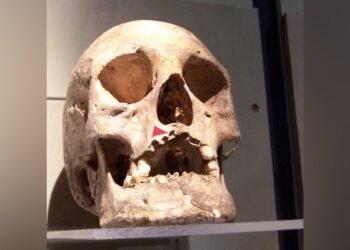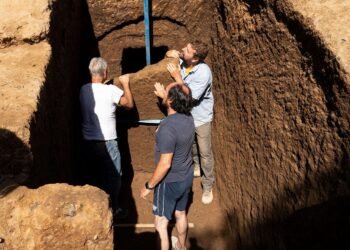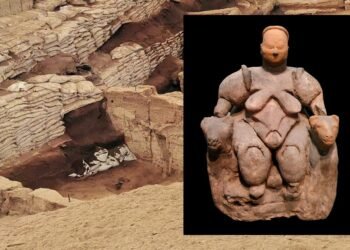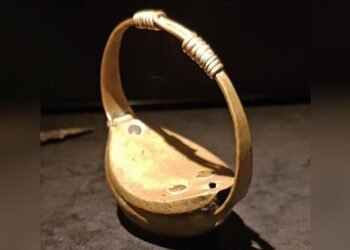Ongoing archaeological excavations in the ancient city of Laodicea, located in present-day Denizli Province, Turkey, have unveiled a remarkable collection of Scylla statues. These discoveries were made during the restoration of the Western Theater’s stage building, which dates back to the second century BCE as part of the “Legacy for the Future Laodicea Project.”
Laodicea, founded between 261-253 BCE by Antiochus II Theos, king of the Seleucid Empire, was once a thriving trading center in Asia Minor. After the Roman–Seleucid War, the city came under Roman control and continued to flourish as one of the most important commercial hubs of the region. Today, Laodicea is renowned for its well-preserved ancient structures, including a stadium, bathhouses, temples, two theaters, and a bouleuterion.
The recent excavation, led by Professor Celal Şimşek from Pamukkale University, has brought to light a series of colorful and intricately designed Scylla statues. These statues are considered unique due to their preservation in their original painted form and are believed to date back to the early 2nd century BCE. Created by the Rhodian sculptors Athanadoros, Hagesandros, and Polydoros, the Scylla statues are among the earliest known examples of their kind and showcase the baroque style characteristic of the Hellenistic period.
In Greek mythology, Scylla is a monstrous sea creature first mentioned in Homer’s Odyssey. Scylla, with a woman’s upper body and a lower body encircled by six wild dogs’ heads, lives in a cave on one side of a narrow strait. As sailors, including Odysseus, attempt to navigate the treacherous waters to avoid the whirlpool of Charybdis on the opposite side, they come dangerously close to Scylla, who devours six of Odysseus’s men.
Türk arkeolojisinin en kapsamlı ve iddialı projesi olan “Geleceğe Miras” uygulamamız meyvelerini vermeye devam ediyor.👏🏻
“Geleceğe Miras Laodikeia Projesi” kapsamında devam eden sahne binasının restorasyon çalışmaları sırasında eşsiz ve renkli Skylla Grubu heykelleri keşfedildi!… pic.twitter.com/kMhJhndvrN
— Mehmet Nuri Ersoy (@MehmetNuriErsoy) August 3, 2024
The newly discovered statues include the head and hand of Scylla, the body of Odysseus, and parts of a ship’s prow, vividly depicting the moment when Odysseus’s crew is attacked by Scylla’s dogs. Professor Şimşek said, “The Skylla Group’s detailed representation, including the painted colors and the realistic portrayal of the attack, is truly remarkable.” He also highlighted that the sculptures have survived in exceptional condition, with their original paints still visible.
Minister of Culture and Tourism Mehmet Nuri Ersoy also expressed his excitement about the discovery, noting the statues’ rarity and their importance for historical and artistic research. In a social media statement, Ersoy remarked, “These extraordinary sculptures are quite important in terms of being rare works that reflect the baroque style of the Hellenistic Period and have survived to the present day with their original paints.”
The Scylla statues found in Laodicea are not only the earliest and most original of their kind but also represent a key moment in the transition from paganism to Christianity, as evidenced by the broken statues found discarded beneath the theater’s stage.
The only other known copy of a similar Scylla statue group was discovered in Sperlonga, Italy, in 1957, dating from the early Roman period. However, the statues unearthed in Laodicea are believed to be from the late Hellenistic to early Imperial periods, specifically between 27 BCE and 14 CE making them an even older and more significant find.
























